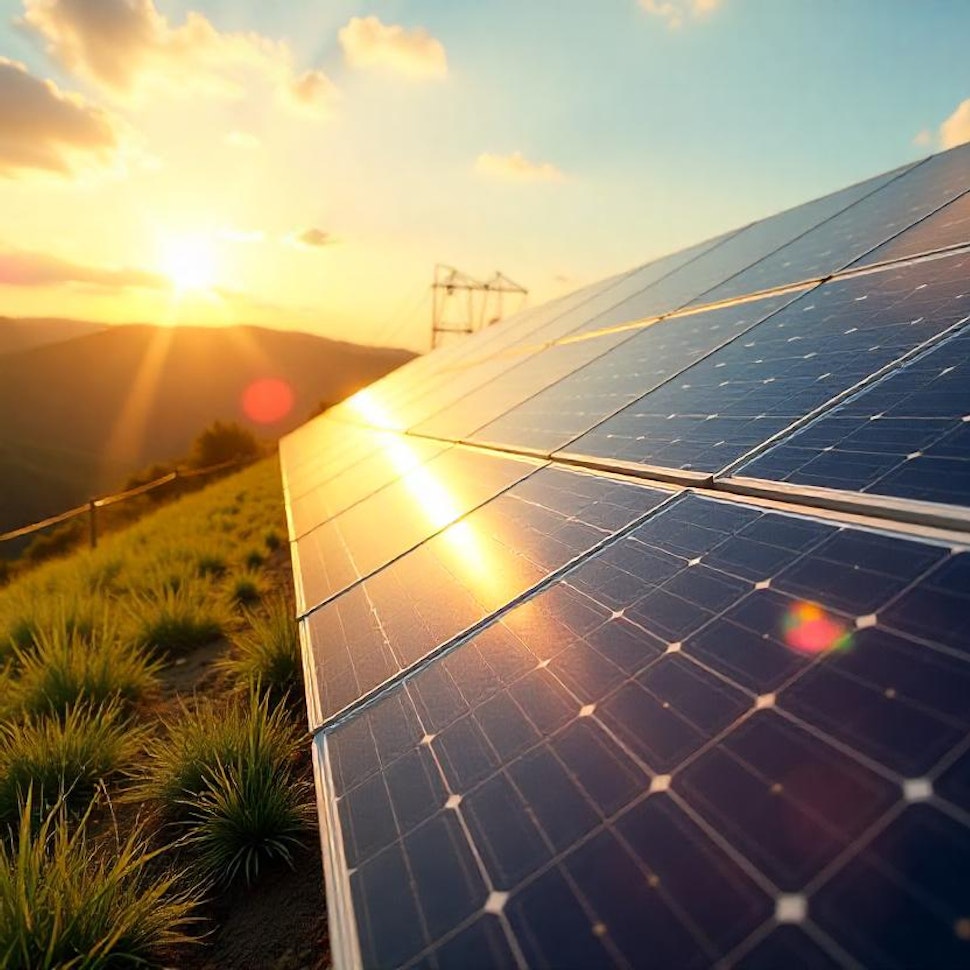- Solar energy blog
- How the EEG 2023 updates will affect the solar market
How the EEG 2023 updates will affect the solar market


Marián Aúz
Strategic Account Executive DACH
Strategic Account Executive at RatedPower with experience driving growth across the DACH region and beyond. Background in international trade and investment advisory, with a strong track record in sales, client relationship management, and market expansion.

Content
The German government has made multiple changes to its Renewable Energy Sources Act (EEG) in recent years. The latest came into force on July 30, 2022, with more to apply from January 1, 2023. The EEG regulates the supply of renewable power into the public electricity grid.
The most significant changes to the law are of relevance to the solar industry. What does the amendment of the EEG mean in practice for solar photovoltaic (PV) installations in Germany?

EEG updates for solar energy
The amendments to the EEG include an ambitious new target for solar generation capacity, adjustments to the feed-in tariff, and changes to make it easier for projects to receive grid connections. Let’s look at what these changes mean for the solar industry.
Solar capacity expansion
The EEG 2023 targets a massive expansion of renewable energy capacity. By 2030, 80% of Germany’s electricity should be generated from renewable sources. To achieve this target, the law incorporates recommendations from the German solar industry association BSW to increase the target for solar capacity to over 200GW by 2030. This will require a rapid increase in new installations every year, as 7GW of new capacity is set to be connected to the grid in 2022, and 9GW next year. Additions will reach double digits in 2024 and from 2026.
The target is to add 22GW of new solar installations annually so that Germany reaches a total solar capacity of 215GW in 2030.
Feed-in tariff changes
Lower targets in recent years have reduced feed-in tariffs for the sale of excess electricity to the grid. This resulted in a focus on smaller PV systems for self-consumption, as it was not profitable to build larger rooftop systems.
The EEG amendment freezes the reduction in feed-in tariffs until 2024, after which it will decrease by 1% every six months. This creates certainty for project developers when calculating the amortization of a PV system.
As the feed-in tariff for 2023 is higher for full feed-in than for surplus feed-in, it is viable for property owners to install two systems on the same building: one for self-consumption and one for full feed-in. The systems must be technically separate — using two inverters and measuring devices, for example. The law also allows switching between full and surplus feed-in, offering flexibility in how much electricity gets fed into the public grid. This aims to take advantage of the full generation potential of roof areas.
PV systems that were commissioned before July 30, 2022 will receive previous remuneration rates, while new installations will receive higher tariffs.
Since July 30, 2022, new tariff rates have applied to systems that have been commissioned and reported to grid operators before being commissioned as full feed-in systems. To benefit from full feed-in tariffs in the future they must be reported to the grid operator again before December 1 of the previous year.
Property owners will also receive subsidies for PV systems with a maximum output of 20kW if the modules are installed in a garden or carport rather than on a building’s rooftop if it can be proved that the rooftop is not suitable for solar installation. Building regulations will still apply, so property owners may need to get a municipal building permit.
70% rule abolished
The EEG also includes the abolition of the 70% rule, known as the active power limitation, which stipulates that PV systems cannot send more than 70% of their rated power to the grid, from January 1, 2023. Under the rule, PV systems have to regulate the power they feed into the grid, to stop as soon as they reach 70% of their rated output.
The 70% rule was introduced to ensure grid stability and compliance was mandatory to receive feed-in tariffs. In practice, however, the regulation rarely comes into effect as PV systems only achieve 100% output in perfect sunlight and temperature conditions.
Simplified grid connection
The EEG aims to simplify the procedure for smaller plant operators to apply for connection to the power grid. Grid operators must provide an online portal for submitting applications for a planned PV project. The operators must respond to a submission within one month and provide specific information such as a timetable or cost estimate.
There will be a transition period until January 1, 2025, for operators to comply.
Simplifications for existing PV systems
The EEG scrapped the renewable energy surcharge from July 1, so some existing PV systems will no longer require a generation meter from 2023. The surcharge was introduced in 2000 to subsidize renewable energy from consumers’ electricity bills.
The removal of the charge also simplifies billing when selling electricity. The Federal Government will instead use the special Energy and Climate Fund (EKF) to fund subsidies directly.
Penalties for construction delays suspended
If the construction of a PV system is delayed, remuneration rates are reduced monthly until it starts operation. This penalty has been suspended until the beginning of 2024, so rates will remain constant in 2022 and 2023.
Auction adjustments
The requirements for renewable auctions have been adjusted. In line with EU regulations, it is only necessary to participate in an auction for systems with capacity over 1MW, but a limit of 6MW now applies to all solar PV projects for renewable energy communities. The aim is to support citizens’ energy initiatives by exempting them from auctions.
A restriction that systems must be ground-mounted was lifted. And the distance corridors for systems installed along motorways or railways was adjusted, expanding the distance from 200 meters to 500 meters, to increase the land that is available for use.
Support for agrophotovoltaics added
For the first time, the EEG has subsidized agrophotovoltaics systems through innovation tenders for special PV systems. In a tender in May, 12 projects with a combined capacity of 22MW were awarded contracts. The amendments to the EEG include permanent tenders for agri-PV, which will significantly increase the potential for large-scale systems. The focus is on ground-mounted systems for arable crops and grassland, but the EEG also adds auction categories for floating photovoltaics and moor voltaics.
Learn more about the solar industry in Germany with our State of Green Germany eBook!
Latest stories
Related posts
Policy and regulation
Solarspitzengesetz: How it affects solar and negative pricing
Find out more about the Solarspitzengesetz, Germany’s Solar Peak Act, designed to prevent oversupply and price surges during peak solar generation.
Updated 4 NOV, 25

Policy and regulation
Winning the auction: A developer’s guide to GEA-4 execution in the Philippines
Find out how solar design tools like RatedPower can accelerate bankable proposals for auctions like the GEA-4 in the Philippines.
Updated 23 OCT, 25

Policy and regulation
How PL 624 and PL 671 will transform Brazil’s solar energy market in 2025
Discover how Brazil's PL 624 and PL 671 bills are reshaping the country's booming solar energy market in 2025—balancing rapid growth with fair grid access and smarter regulations.
Updated 15 JUL, 25

- RatedPower
- Solar energy blog
- How the EEG 2023 updates will affect the solar market
 Watch a demo
Watch a demo Ask our AI Product Expert
Ask our AI Product Expert

